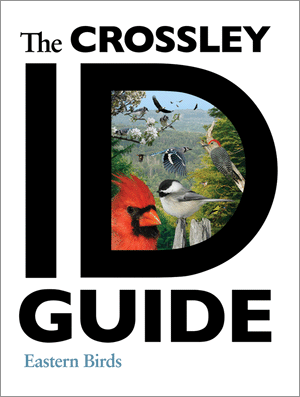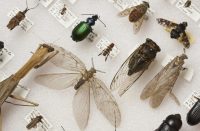Apart from a knowledgeable mentor, the field guide is a nature enthusiast’s most valuable tool. With the right guide, a seemingly featureless swath of unfamiliar habitat comes alive with ecological insight. In ornithology, guides are particularly valuable due to the immense variability that birds display. In The Crossley ID Guide: Eastern Birds, Richard Crossley has created an inventive bird identification scheme that closely simulates the actual experience of observing a bird in the field.
Apart from a knowledgeable mentor, the field guide is a nature enthusiast’s most valuable tool. With the right guide, a seemingly featureless swath of unfamiliar habitat comes alive with ecological insight. In ornithology, guides are particularly valuable due to the immense variability that birds display. In The Crossley ID Guide: Eastern Birds, Richard Crossley has created an inventive bird identification scheme that closely simulates the actual experience of observing a bird in the field. Even more importantly, he has revived the idea that a field guide should help a birder develop identification skills, rather than replace them. Crossley’s ingenious book will gather many ardent supporters, even as other birders will surely critique such a departure from the familiar.
Until the 1930s, bird guides were scientifically focused with a great deal of background in natural history. An alternative model was developed in 1934, when Roger Tory Peterson created a guide focused on quick identification in the field. His revolutionary identification system grouped species depending on those most likely to be confused with one another, rather than those most closely related. He also favoured illustrations over photographs, believing that an artist’s composite of a “typical” species form was more useful than a single photograph taken at a single moment. These innovations changed the basic style of subsequent birding guides, until now.
Crossley’s ID Guide has blown the status quo out of the water with a completely new approach to identification, and to birding in general. The ID Guide takes advantage of technological advances in Photoshop and digital photography to show birds as they appear in the field: from a variety of angles, in different postures, often flying and with other birds. Crossley believes that simulating the field experience will allow birders to deal with the complexities of identification independently, and will lead to a greater understanding of wild birds. A large photographic panorama has been created for each species, showing a typical habitat filled with images of the bird from a variety of distances, angles, and in various plumages. This is in direct contrast to the most popular current guides, where only a few painted images for each species float on a white background, out of context with their environments and other birds.
This has a number of advantages over other field guides. In the majority of plates, there is one large image of the species in a typical posture and plumage. Surrounding it are smaller images that help the reader tease apart thorny issues such as angled observations, alternative plumage, typical habitat and relative size determination. Such a layout also provides the opportunity to “grow into” the book as a birder becomes more experienced. The book is also gorgeous, and flipping through the pages is as fun as it is instructive, especially since Crossley has put a few unidentified birds into many of the plates, creating a challenging quiz for those who want one. When it is considered that Crossley took almost every photo in the book himself, one realizes that his accomplishment would be considerable even if his guide was not pedagogically or philosophically important; coupled with the book’s originality, it is remarkable.
Crossley himself is uniquely qualified to author such a book. A Briton by birth, he honed his identification skills in the fiercely competitive English birding culture. Taking a guide into the field was considered bad form, and birders relied heavily on field notes for identification purposes. Crossley believes that this pushed birders to look harder at the birds they observed and allowed them to understand aspects of behaviour and ecology that would be missed by merely rifling through a guide. After becoming an avid birder and bird watching in a number of countries, Crossley moved to Cape May, New Jersey where the birding culture is similar to that of his native England. Cape May hosts the Birding World Series, and has a number of world-famous birding spots.
There is much to say about the Crossley guide and doubtless it will be exhaustively debated in the birding community. Possible shortcomings include the fact that its huge size prohibits field use. The fact that the species are not taxonomically listed may also give some scientific purists pause. However, is gratifying to see the world of the field guide revitalized. Beginners and advanced birders alike can use it to build their identification skills, and those who prefer other guides for that purpose may simply appreciate it for its stunning photography and creative imagery. With so much to offer, it seems certain that this book will become a classic of the bird lover’s library.
The Crossley ID Guide: Eastern Birds, David Crossley, Princeton, New Jersey: Princeton University Press, 2011, 515 pages
Subscribe now to get more book reviews in your mailbox!
Reviewer Information
Emily Rondel recently completed a Master’s degree in Environmental Studies where she focused on citizen science, particularly relating to birds. As a direct consequence of this research, she now belongs to a small fringe group that is trying to make birdwatching cool again. She also works at the Royal Ontario Museum.













